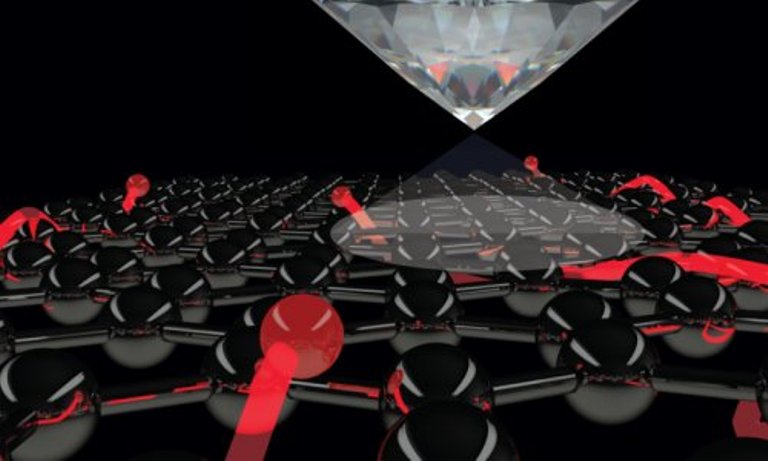Scientists have created the world’s first two-dimensional ferromagnetism in graphene. The use of the resulting magnetic state of graphene could be the basis for a new approach to electronics, improving energy efficiency and speed while developing devices that use alternative technologies without using silicon.
Graphene, a two-dimensional modification of carbon, is the lightest and strongest of all two-dimensional materials available today, and is also highly conductive. In 2018, researchers modified graphene and gave it properties of cobalt and gold – magnetism and spin-orbit interaction (between a moving electron in graphene and its own magnetic moment). When interacting with cobalt and gold, graphene not only retains its unique properties, but also partially adopts the properties of these metals.
As part of the new work, the scientists synthesized a system with a ferrimagnetic state of graphene. This is a unique situation where a substance is magnetized in the absence of an external magnetic field. Physicists used a thin layer of cobalt on its surface and a similar substrate made of a gold alloy.
During the surface doping, dislocation loops formed under the graphene. These loops are triangular regions with lower density cobalt atoms, where gold atoms move closer. Until now, it was known that single-layer graphene can only be completely magnetized homogeneously. However, research by scientists has shown that it is possible to control the magnetization of atoms of individual sublattices through selective interaction with the structural defects of the substrate.
The second important property of graphene synthesized by physicists is a strong spin-orbit interaction. In this structure, the strengthening of this interaction is explained by the presence of gold atoms under the graphene. With a given ratio of magnetic and spin-orbit interaction parameters, a transition from the trivial, i.e. ordinary, state of graphene to a new, topological state is possible.
Source: Port Altele
